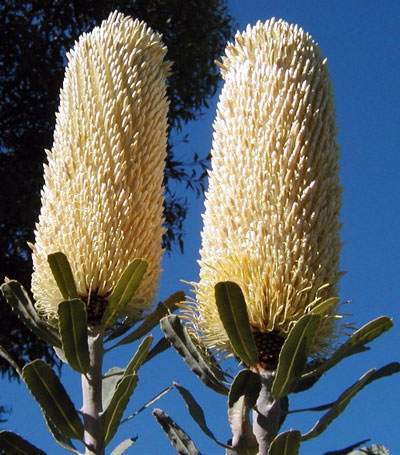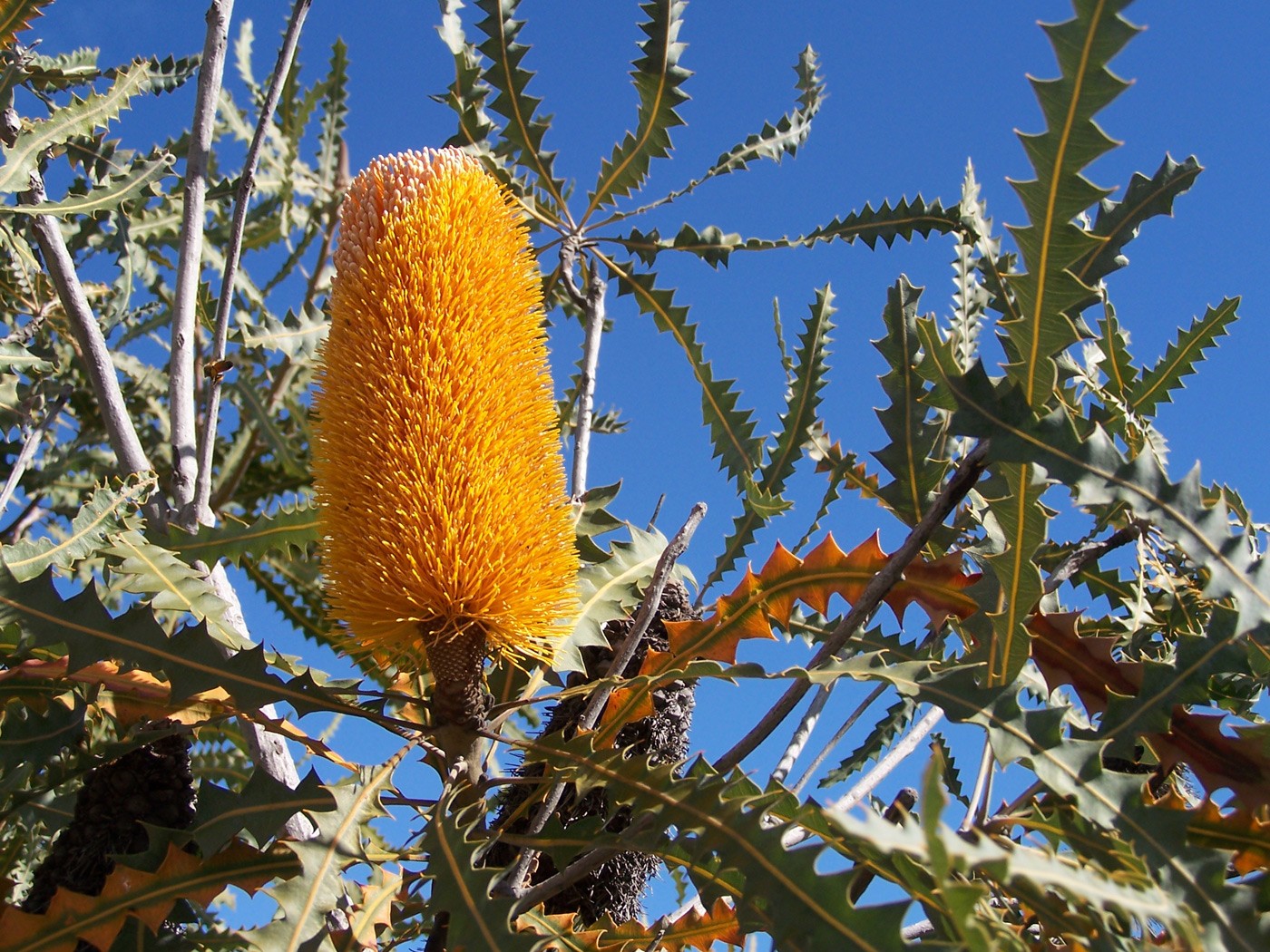Banksia – Known for Their Fruiting “Cones”, Flower Spikes and Flower Heads
Scientific Classification
| Kingdom: | Plantae |
| (unranked): | Angiosperms |
| (unranked): | Eudicots |
| Order: | Proteales |
| Family: | Proteaceae |
| Genus: | Banksia |
Banksia is a variety comprising 170 types genus belonging to the plant family Proteaceae. One identifies these famous garden plants and wild Australian flowers by their characteristic traits such as fruiting “cones”, flower spikes and flower heads. Size-wise, Banksia’s variety vary from low lying wooded shrubs to 30 meters tall trees. You usually see them in many landscapes, such as shrub land, sclerophyll forests, and arid landscapes (occasionally) and rainforests, but you do not see them in the deserts of Australia.
Description

Banksia is a tree that grows to a height of 15 meters and normally to a width below 3 meters and if in barren habitats lying in the coastal areas, they grow to a height of 6 meters. They have a single thick trunk with rough gray colored bark; the trunk is generally knotted and twisted. The colors of the leaves are deep green and underneath it is white. The leaves that are 6 to 35mm in width and 4-20 cm in length, grow in whorls of 3-5; they have notched edges when tender, but the margins become full when they grow.
Banksia flowers are tubular in shape with pointed tips; their width is 5 cm and height 10-12 cm. The flowers include many hundreds of tiny flowers thickly packed around the main axis in the form of a spiral. The color of the flowers in the budding stage is pinkish or greenish and when mature they are yellow. The fruit comprises ‘follicles’ joined together to the developing ‘cone’ enclosing 1 or 2 black colored seeds of length 6 to 10 mm
How to Cultivate Domestically

Photo by: Satu Suro
Preparation for Planting
- Banksias can tolerate malnutrition conditions, but under properly drained soils.
- When planting banksias in dense soil, take precautionary measures like elevating the ground to a minimum of 30-60 cm or add gypsum or suitable soil conditioners.
- Water only to their needs.
- Give your banksia a mild treatment of phosphorus. Normally they do not prefer phosphorus. Add fertilizers to a limited quantity.
- In case their leaves become yellow use chelated iron as per instructions.
- Do not use mulch of organic mulch; they enhance nutrients. A ground cover mulch creeping plant is ideal.
Planting
- For planting your Banksia, select a spot in a sunny place with partial shade in the afternoon. Your banksia requires a well-drained semi sandy soil, thus modify your soil if needed.
- Dig up the pit to plant your Banksia, remove the soil from it and add perlite or humus to
- On top of the exposed soil, pile up a bed of organic soil to create a mound on the old soil to seem like a hill, and then plant your Banksia.
- Transplant the Banksia from the container in the hole you dug in the mound, top the hole with soil and firm gently.
- First, water thoroughly till the water enters the roots of the plant, further, continue watering only if the soil appears dry.
Placement and Watering
Plant your Banksia in a big pot and display it in your porch or balcony. Provide sufficient drainage for the pot. A good one is a Terra cotta clay pot with a hole at its base. After planting your lady Banksia, water it at intervals of seven to ten days. Once it has grown to full capacity, reduce the frequency of watering, provide sufficient time for the soil to dry before your next watering.
Flowering Period
Flowering Season: Autumn, Spring, Summer.
After Bloom Care
Blossoming takes place on old wood that you would do well to prune when they cease flowering. After blooming, cut away all the stems and retain just five healthy ones on the bush whose diameter is around quarter-inch.
As Cut Flowers

Photo by: Gnangarra
Banksia is excellent as cut flowers. People use them in dyeing and as dry flowers. For a number of years, people reaped Banskia flowers from the bushes of Western Australia, drying them and using them as cut flowers. They also export these flowers to Japan, USA and Europe.

Having discovered a fondness for insects while pursuing her degree in Biology, Randi Jones was quite bugged to know that people usually dismissed these little creatures as “creepy-crawlies”.







